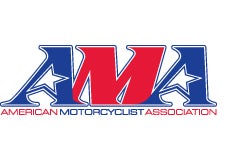 PICKERINGTON, Ohio — Testifiers told a key U.S. House subcommittee on June 22 that off-highway vehicle (OHV) recreation puts billions of dollars into the U.S. economy, and public land needs to be opened up for motorized recreation, the American Motorcyclist Association (AMA) reports.
PICKERINGTON, Ohio — Testifiers told a key U.S. House subcommittee on June 22 that off-highway vehicle (OHV) recreation puts billions of dollars into the U.S. economy, and public land needs to be opened up for motorized recreation, the American Motorcyclist Association (AMA) reports.
Supporters of H.R. 1581, the Wilderness and Roadless Area Release Act of 2011, testified that the bill would free up almost 43 million acres of public land that now may be off-limits to off-highway riding.
“As it stands, the BLM [federal Bureau of Land Management] currently restricts activity on nearly 7 million acres of WSAs [Wilderness Study Areas] despite the fact the BLM itself has already determined these areas are not suitable for Wilderness designation by Congress,” testified Thomas Crimmins, spokesman for the group Professionals for Managed Recreation.
“The situation with the Forest Service is even worse,” he said, “as access is restricted to over 36 million acres of IRAs [Inventoried Roadless Areas] that have been deemed unsuitable for ultimate designation as Wilderness.”
The testimony came during a House Subcommittee on National Parks, Forests and Public Lands oversight hearing on “Opportunities for Outdoor Recreation on Public Lands, chaired by Rep. Rob Bishop (R-Utah).
Besides Crimmins, others who testified included Scott Jones, who spoke on behalf of the AMA and the Colorado Off Highway Vehicle Coalition; Dick Lepley of the Pennsylvania Off-Highway Vehicle Association; Russ Ehnes of the National Off-Highway Vehicle Conservation Council; Don Amador of the BlueRibbon Coalition; and Karen Umphress of the Minnesota Motorized Trails Coalition and the Coalition of Recreational Trail Users.
The Wilderness and Roadless Area Release Act of 2011 would remove stringent use restrictions on 6.7 million acres managed by the BLM and on 36.1 million acres of U.S. Forest Service land that was evaluated for strict congressional Wilderness land-use designations.
The federal agencies have determined the 43 million acres aren’t suitable for Wilderness designation, yet because of various laws and rules they must continue to strictly manage the land until Congress “releases” it for other possible uses, which H.R. 1581 would do.
Crimmins, who worked for the Forest Service for 32 years, was involved in the process for evaluating Forest Service land to determine whether it deserved a Wilderness designation. A Wilderness designation bars off-highway riding and most other uses.
“The intent of the process was to identify any and all areas that could potentially be considered for Wilderness designation and then, once and for all, make recommendations for areas that should be considered for Wilderness designations and areas that should be managed for multiple use,” Crimmins testified. “This would allow the agency to move forward with its mission to manage the national forests.”
While land mangers expected that areas ultimately deemed as unsuitable for Wilderness designation would be released, “this has not been the case,” he said.
On the economic side, Jones testified that “OHV recreation provided over a billion dollars in positive economic impact and resulted in over 12,000 jobs in the state of Colorado alone.”
Umphress said that all-terrain vehicle (ATV) activity alone in Minnesota contributed $2 billion to the economy in 2006.
Lepley, who also owns a motorcycle dealership, testified that the estimated economic value of the OHV retail market was $14.6 billion in 2009, “bolstered by the sale of 131,000 new off-highway motorcycles and 321,000 new ATVs, which are now part of the estimated 12.2 million dirtbikes and ATVs in America.”
“Clearly, the powersports industry contributes mightily to the nation’s economy during both good times and bad, but regardless of the economy, nothing threatens dealerships and the industry at large like having no place to ride,” he said.
To urge your federal lawmaker to support H.R. 1581, the Wilderness and Roadless Area Release Act of 2011, go to http://www.americanmotorcyclist.com/rights/issueslegislation.